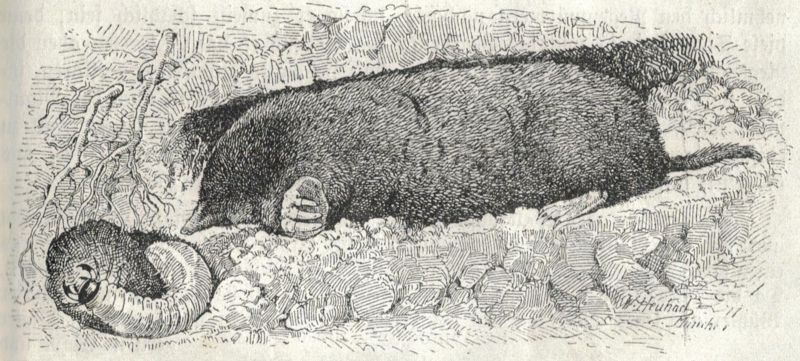Despite over 120 years of fossil discoveries, the Florissant Fossil Beds are still producing new discoveries.
A new genus and species of fossil mole has been described from Florissant, published in September 2007 in Acta Palaeontologica Polonica. Karen Lloyd, who graduated in 2007 from the University of Colorado with an M.S. in Museum and Field Studies, discovered a partial jaw with three teeth among material collected from Florissant Fossil Beds National Monument.
Lloyd named the fossil mole Oreotalpa florissantensis, which means “mountain mole from Florissant” (oreo = mountain, talpa = mole). In addition to representing a new genus and species, Oreotalpa is the first evidence that moles lived around ancient Lake Florissant, as well as the oldest known specimen of a mole from North America. While moles were previously believed to have originated in Europe, Oreotalpa suggests the possibility of a North American origin for moles.
Research since 2003 by Lloyd, her advisor Dr. Jaelyn Eberle, and another Museum and Field Studies graduate and former park intern, Marie Worley-Georg, has more than tripled the number of known fossil mammals from Florissant.
The list now includes rodents (relatives of squirrels, mice, and the “mountain beaver” Aplodontia), rabbits, shrews and other insectivores, the small three-toed horse Mesohippus, deer-like Leptomeryx, sheep-sized oreodonts, a pigmy opossum, a rhinoceros-like brontothere, and a tapir-like ancestor of the rhinoceroses. Although less abundant at Florissant than fossil plants and insects, mammals are an important part of the ecological picture of ancient Lake Florissant.
You can read an abstract and download a copy of Lloyd and Eberle’s paper at Acta Palaeontologica Polonica.
-Melissa Barton
Image Credit: Walter Heubach (German, 1865-1923) (European mole, Talpa europaea)

